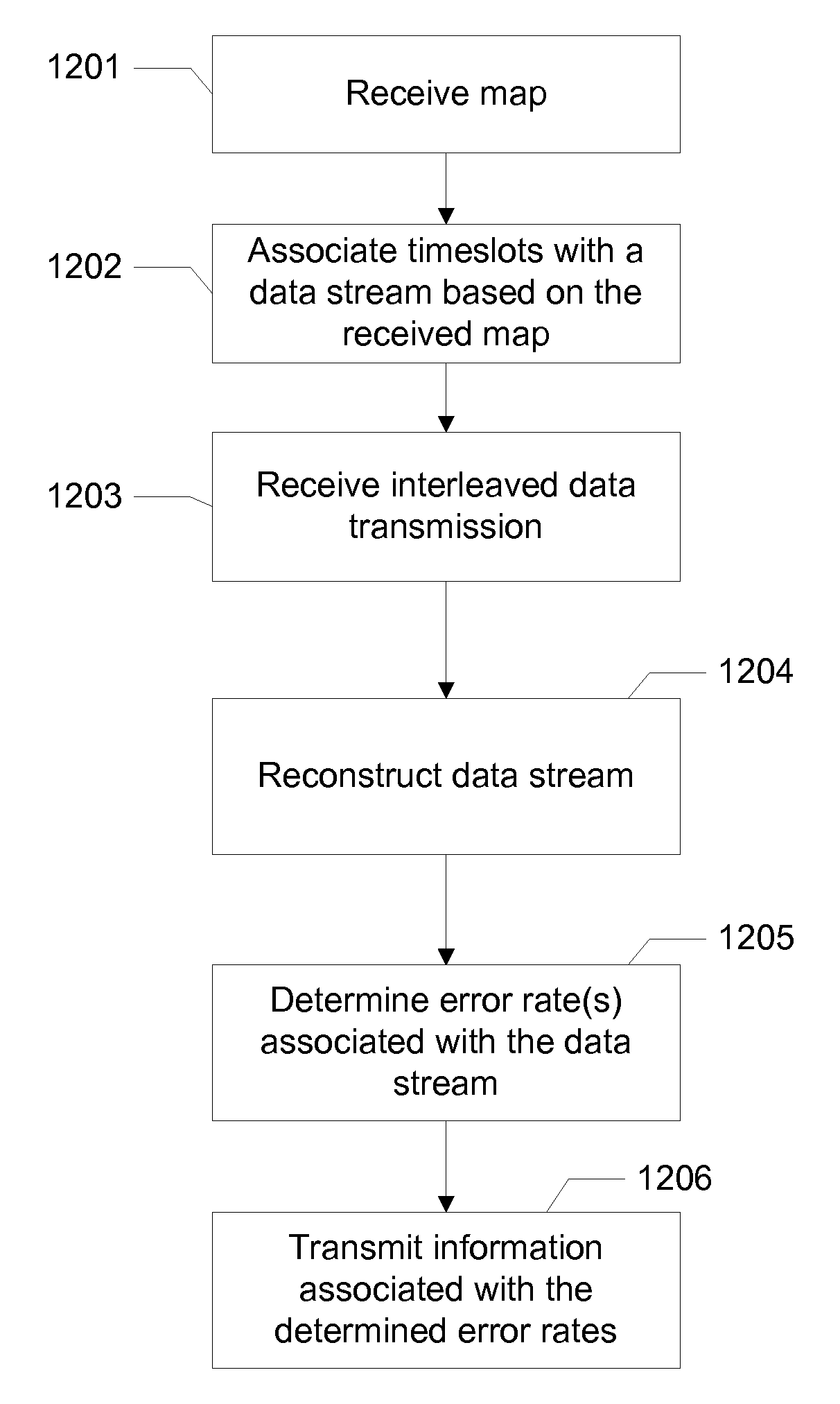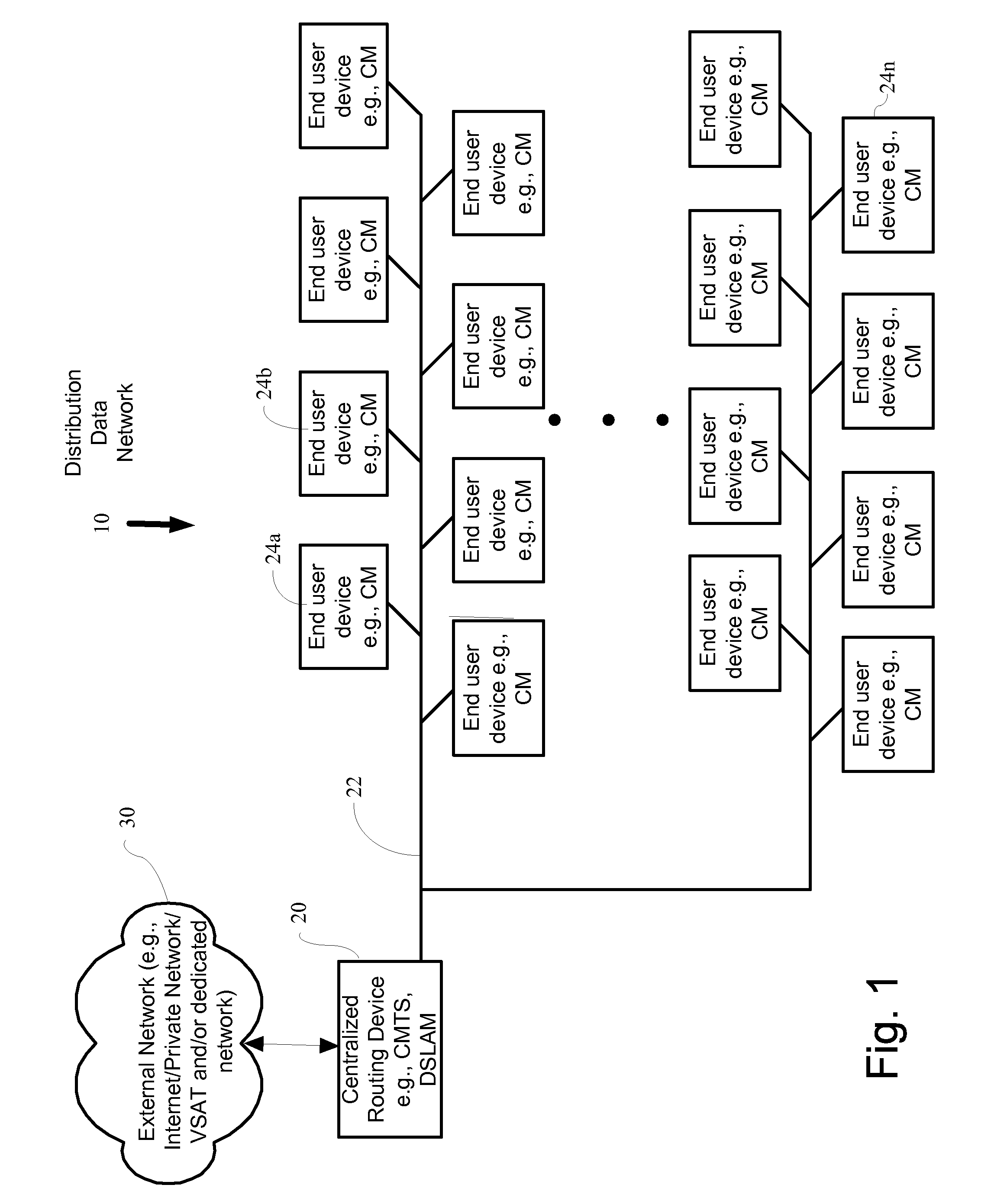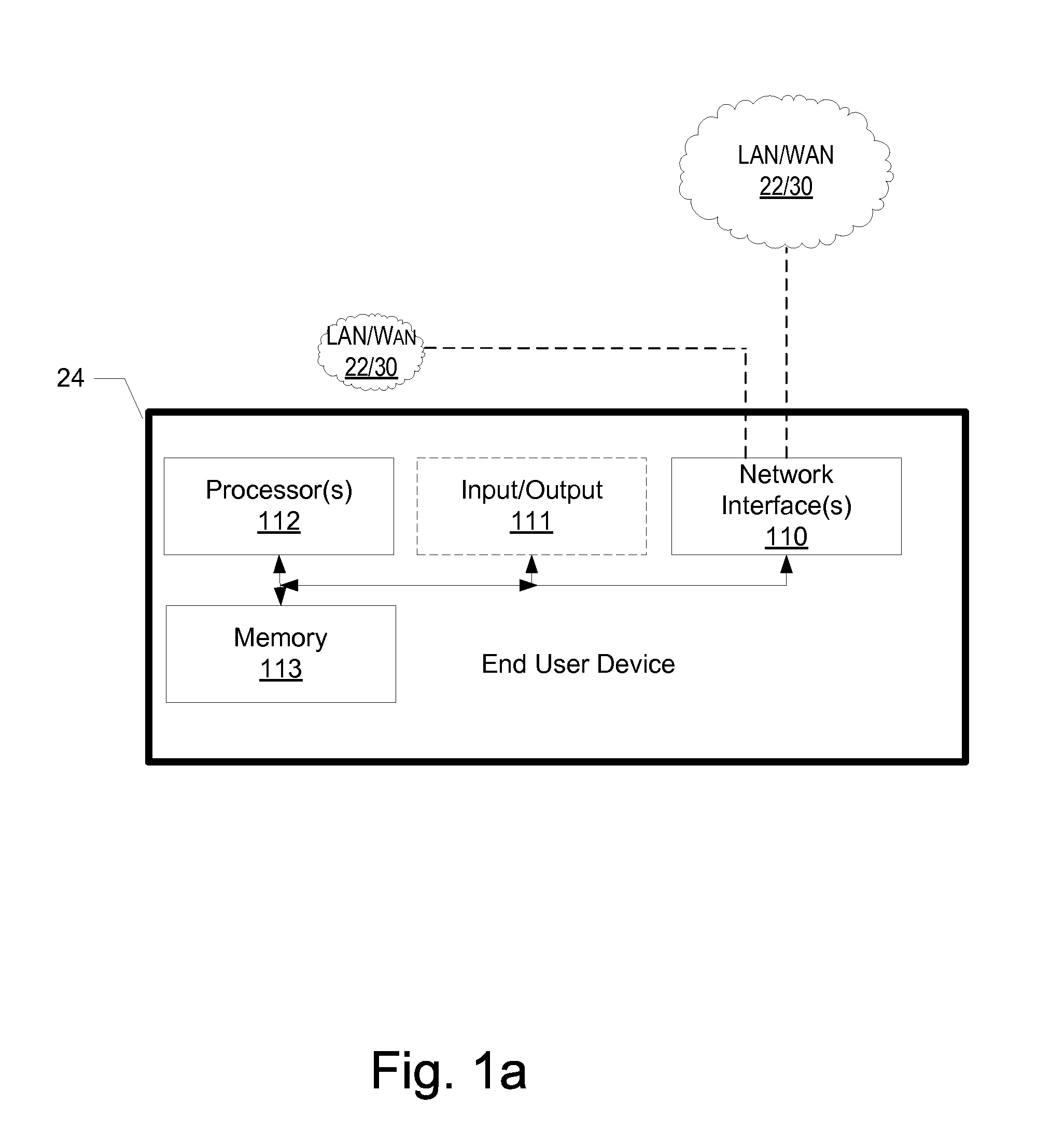Variable Interleave Data Transmission
a data transmission and data technology, applied in the field of data transmission, can solve the problems of reducing data throughput, data transmitted over any type of transmission medium is subject to noise, and the interleave depth for an entire cable data network may not be optimal for all cms
- Summary
- Abstract
- Description
- Claims
- Application Information
AI Technical Summary
Benefits of technology
Problems solved by technology
Method used
Image
Examples
Embodiment Construction
[0027]In the following description of the various embodiments, reference is made to the accompanying drawings, which form a part hereof, and in which is shown by way of illustration various embodiments in which the features herein may be practiced. It is to be understood that other embodiments may be utilized and structural and functional modifications may be made without departing from the scope of the present disclosure.
[0028]FIG. 1 illustrates an exemplary data distribution network (e.g., a cable network, DSL network, VSAT network, satellite network, wireless network) that may utilize embodiments of the features described herein. A centralized routing device 20 such as a cable modem termination system(CMTS) / DSLAM may be connected by a transmission medium such as a fiber, coaxial cable, wireless, or other transmission medium 22 to multiple modems (e.g., cable modems (CM)) 24 in subscriber locations, for example businesses or residences. Centralized router 20 may reside in the head...
PUM
 Login to View More
Login to View More Abstract
Description
Claims
Application Information
 Login to View More
Login to View More - R&D
- Intellectual Property
- Life Sciences
- Materials
- Tech Scout
- Unparalleled Data Quality
- Higher Quality Content
- 60% Fewer Hallucinations
Browse by: Latest US Patents, China's latest patents, Technical Efficacy Thesaurus, Application Domain, Technology Topic, Popular Technical Reports.
© 2025 PatSnap. All rights reserved.Legal|Privacy policy|Modern Slavery Act Transparency Statement|Sitemap|About US| Contact US: help@patsnap.com



